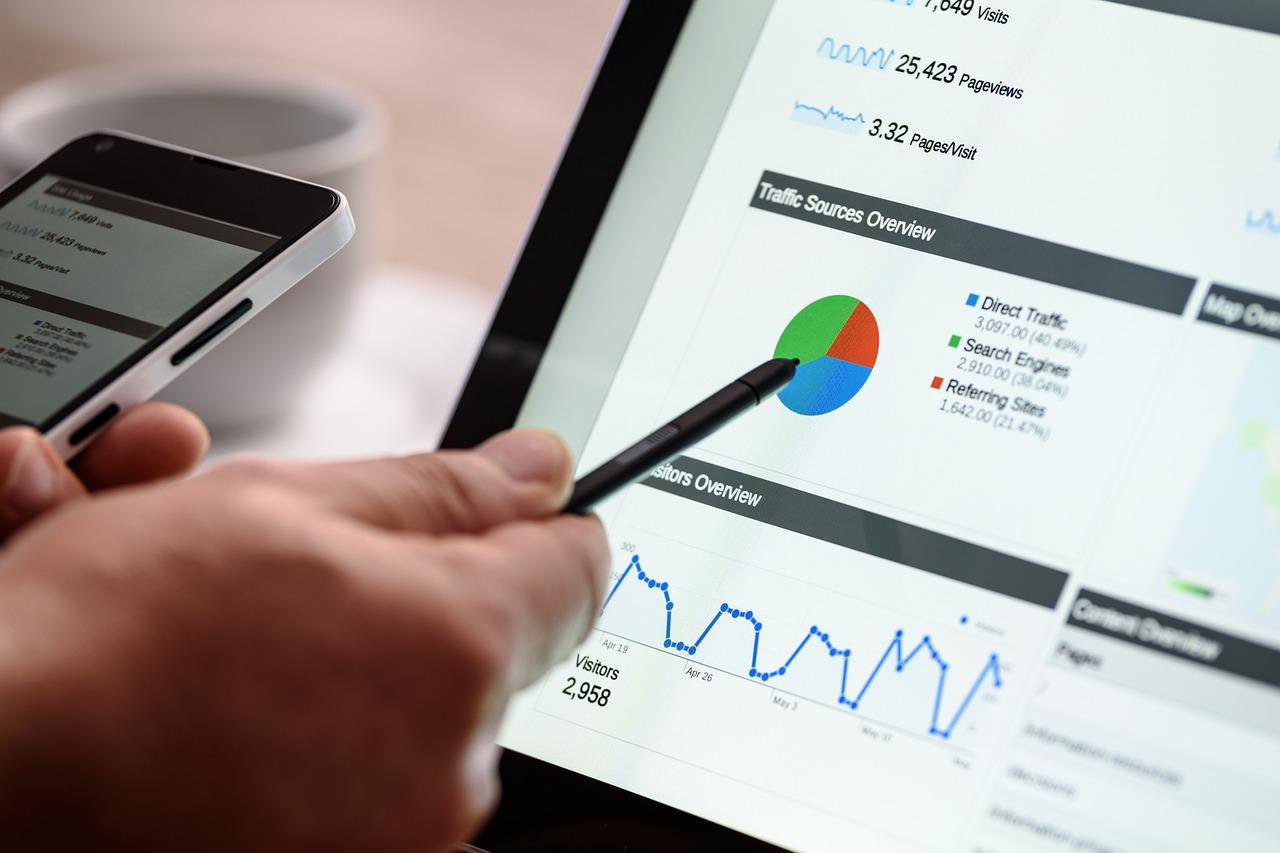How To Check if Backlinks Are Indexed on Google?
Have you just earned another backlink? That’s great. But are you sure that your hard-earned backlink is actually helping your SEO efforts? There is, indeed, a debate in the SEO community regarding the importance of backlinks, especially because Google...

 Have you just earned another backlink? That’s great. But are you sure that your hard-earned backlink is actually helping your SEO efforts?
Have you just earned another backlink? That’s great. But are you sure that your hard-earned backlink is actually helping your SEO efforts?
There is, indeed, a debate in the SEO community regarding the importance of backlinks, especially because Google is maintaining a certain degree of secrecy regarding its ranking factors.
Nevertheless, when it comes to ranking websites, backlinks have been in the limelight for years now. That’s why every backlink you create is still pivotal for your website’s SEO.
However, for a backlink to be effective, the page containing it must be indexed by Google
Ensuring that the article with your backlink is Google-indexed is essential to boost your site’s authority and magnetize more referral traffic.
In this post, we will discuss a set of methods to check if an article containing your backlink is indexed on Google to help you maximize the impact of your backlinks and stay ahead in the SEO game.
In the meanwhile if you want to know how to index backlinks faster, check out this article.
Using Google Search Operators
You can use multiple search operators to find out if Google has indexed a particular article containing your backlink.
Direct URL Search
One of the simplest methods to check if an article is indexed is to search for its URL directly in Google.
Enter the full URL of the article into Google’s search bar.
https://www.example.com/your-article-url

If the article with your backlink is indexed, it will appear in the search results.
Using the site: Operator
The site: operator allows you to search within a specific domain to see if your article is indexed.
Use the site: operator followed by the domain and part of the URL or keywords.
Something like this. site:example.com “unique search term from the article”

This operator filters search results to show only pages that contain the specific search term from that particular site. If your article is indexed, it should appear in the results.
Checking with a Random Sentence
Using a unique sentence from your article can help determine if it’s indexed, especially if the direct URL search or site: operator doesn’t yield results.
Copy a unique, non-generic sentence from the article with your backlink and paste it into Google search with quotation marks.

If the content is indexed, the article should appear in the search results.
Using Google Search Console (if available)
Google Search Console is a powerful tool for webmasters. The URL Inspection Tool provides detailed information about a URL’s indexing status. However, this can be checked only if you have the search console access.
Log into Google Search Console and use the URL Inspection Tool.
Once you enter the URL of the article, the tool will provide detailed information on the indexation status.
If the corresponding page is indexed, you will be notified as below.
Checking Google Cache
The cache: operator shows a snapshot of how Google last indexed a page.
Use the cache: operator followed by the URL of the page for which you want to check the indexing status.
The format is cache:https://www.example.com/your-article-url

If the page is cached, it means Google has indexed it at some point. You will see a snapshot of the page as it appeared when Google last crawled it.
Using SEO Tools
Third-party SEO tools like Ahrefs, SEMrush, and Moz can provide you with detailed SEO metrics regarding a web page of your choice. These tools can also help you keep track of the backlinks you have built. However, these tools use their own crawlers to identify pages on a website, which means the pages that the tools show may not be indexed on Google.
If a page isn’t indexed by Google, it will barely have any online visibility. Given the scenario, a third-party SEO tool may not be able to fetch sufficient metric-driven insights.
So, if a third-party tool like Ahrefs fetches substantial traffic and keyword metrics related to a URL input, the page is most likely to have been indexed.
Once you Enter the URL in Ahrefs, it will generate an overview of the target page, including backlinks, keywords, traffic and more.
You can check your link placement on the article using this tool
As your backlink is placed on an external site, navigate to Linked Domains under the outgoing links section.
You will see the number of backlinks pointing to your site, link type and more.
Understanding Search Index Lag
Sometimes, there can be a delay between when Google initially crawls and indexes a page and when it updates its search index. This is known as search index lag.
During this period, the page you are looking for might be indexed but will not immediately appear in results when using advanced search operators. In such cases, you may not be able to locate it on Google using specific search operators like the site: however one of the above methods should yield result.
That said, Google hasn’t confirmed the existence of Index Lag but we have noticed it multiple times in Stan Ventures. There are times when a search from the US may fetch you the result but from some other country may not. The delay is mainly due to the lack of synchrony in saving and updating of information across Google data centers, which can cause delays.
What Crawled vs. Indexed Means
Crawling and indexing are two consecutive processes used by Google and other search engines before ranking a page. Google has to discover and crawl the page before adding it to its database.

Only after Google indexing the article containing your backlink, will you be able to find it in search results.
Want to dig deeper? Check out how search engines crawl, index and rank content.
Troubleshooting Indexing Issues
So, how do you know what’s precisely causing indexing issues? Here’s how you can troubleshoot them.
Verify Indexing Status
As I mentioned earlier, you can use the URL Inspection Tool in the Google Search Console to check the indexing status and the lurking issues behind unindexed pages.
Enter the specific page URL in Google Search Console. It’s good if the content is indexed.

In case the page is not indexed, you will see the “URL is not on Google” notification. Click on the “Learn More” button beneath the notification and Google will allow you to find out potential reasons hindering the page from being indexed.
Note: You can use this method to troubleshoot indexing issues only if you have access to the Google Search Console account of the website in which the article with your backlink is published.
Resubmit URL for Indexing
If a page is not indexed, resubmitting the URL can help draw Google’s attention to that page so that the search engine will re-crawl and index it.
Again, the URL Inspection tool comes to your rescue. You can use the “Request Indexing” option to submit the URL to Google.

In general. Google’s spiders are pretty fast at crawling web pages across the internet and the Request Indexing feature can prompt faster indexing. However, this feature doesn’t guarantee immediate indexing.
Webmasters should ensure that they have fixed all the potential bugs carefully to reap maximum benefits out of the the Request Indexing feature
Ensure Content Uniqueness
How do you convince Google to index and rank your content higher while thousands of similar articles are out there? That’s why you need to create unique content that helps you stand out from the crowd. Yes, unique content is more likely to be indexed by Google.
When you build a backlink, make sure that the content surrounding it is of high quality and brings value for users. This will improve the chances of that content getting indexed faster and add more context to your backlink, increasing traffic flow to the target page.
Check for Technical Issues
Technical issues lurking unnoticed can prevent a page from being indexed.
One of the most common technical issues is the robots.txt file blocking access to the content. This HTML tag red-flags search engine bots from crawling your content.
If crawling doesn’t happen, Google will not add that content to its database. As a result, the page remains unindexed.
Similarly, the occurrence of noindex meta tags in the page’s source code signals Google not to include the content in search results. This can affect the online visibility of the content with your backlink.
Weeding out these technical issues can improve the chances of the page getting indexed by Google.
Share Across the Web
Many website owners overlook this, but if you want the content with backlinks to your website to be indexed on Google faster, share the URL of the page across the platforms where you are active.
The more places Google crawlers find the URL, the faster it will get indexed. Additionally, as it gets indexed, more authority will be passed to the backlink because multiple domains are linking to the content that carries your backlink.
Backlinks pointing to your site from other external websites can bring you benefits only if Google indexes the content containing your backlink.
Getting added to Google index helps the content gain more online visibility and drive relevant referral traffic to your website.
Leverage the above methods to verify the indexing status of articles containing your backlinks and get issues troubleshooted at the earliest to derive maximum value out of every backlink you acquire.

 ShanonG
ShanonG 
































